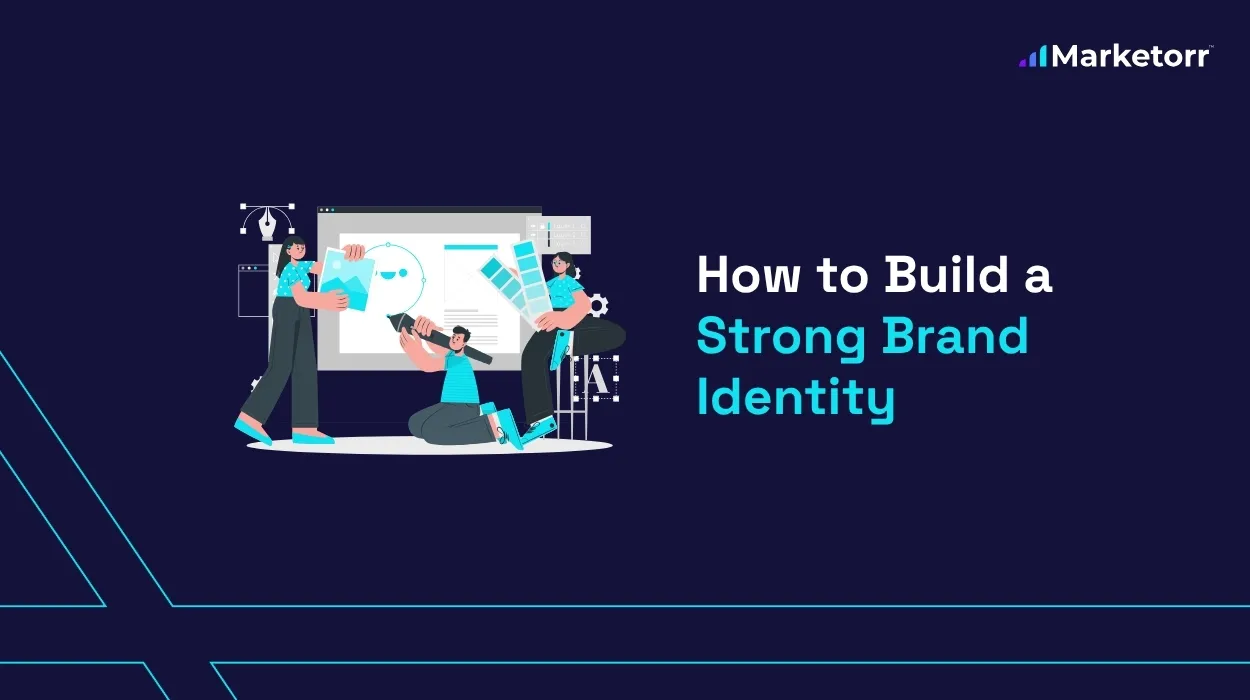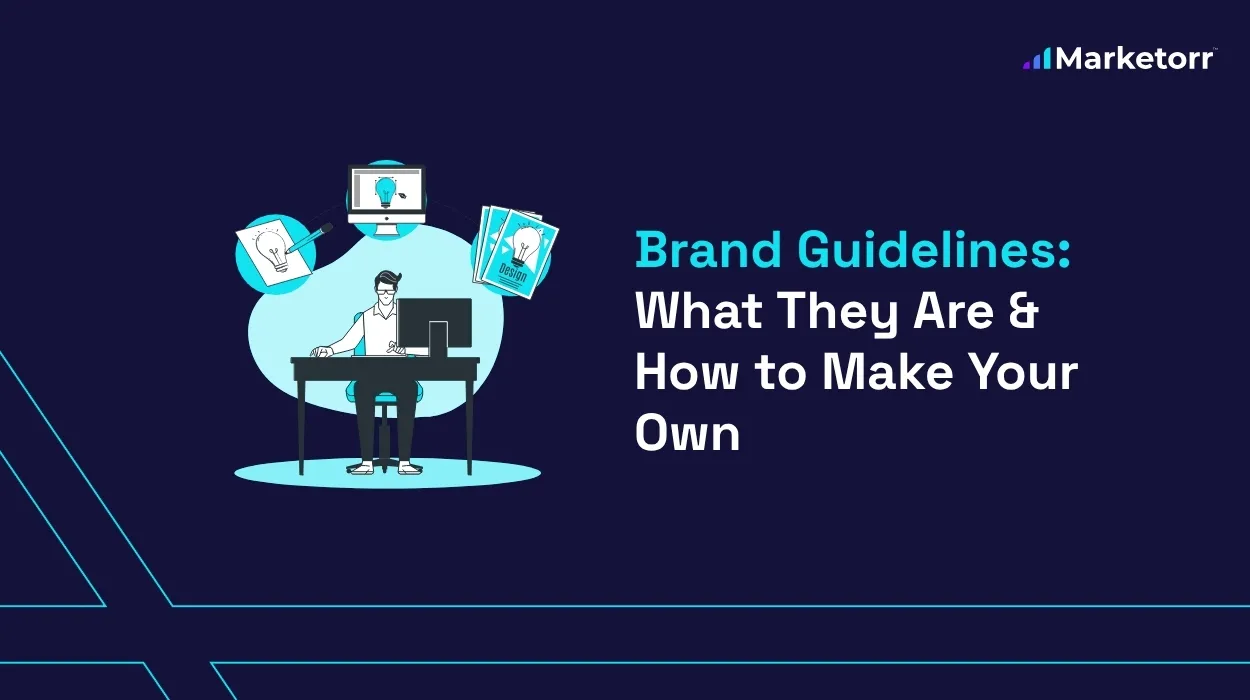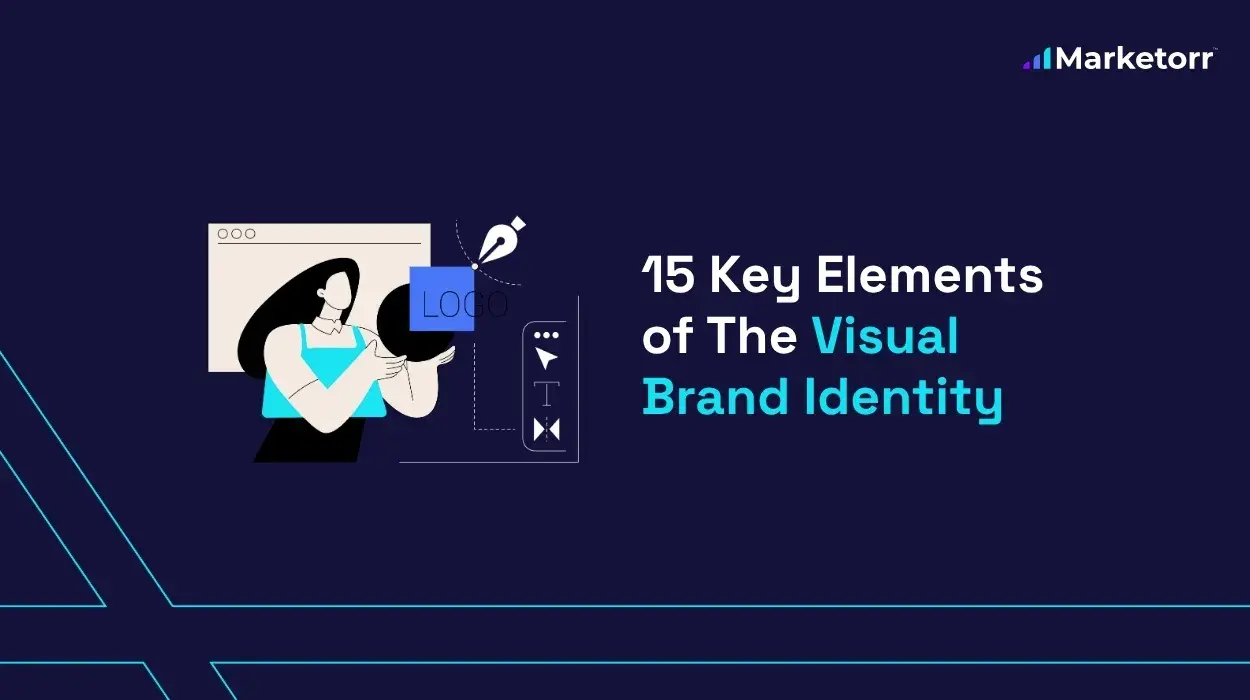Backlinks from high-authority websites are one of the strongest signals Google uses to rank content. They influence trust, domain authority, and how easily a site ranks for competitive keywords. But earning these backlinks requires more than just publishing content — it involves strategy, relevance, and consistency.
This article breaks down 11 actionable strategies to build high-authority backlinks that improve SEO performance. You’ll learn how to attract links through valuable content, leverage guest blogging and digital PR, use techniques like broken link building and skyscraper content, and turn unlinked mentions into backlinks. We’ll also cover modern link-building methods such as offering tools, creating data-driven assets, and collaborating with influencers or journalists.
Each strategy is explained with clear context and supported by proven practices. The goal is to help you build a sustainable backlink profile that strengthens topical authority, drives organic traffic, and aligns with Google’s quality standards.
Create High-Quality Content
High-quality content naturally attracts backlinks because it offers unique value, solves real problems, and builds trust.
Search engines prioritize content that gets cited and referenced, and quality is the root of all organic link-building. When a page offers comprehensive, up-to-date, and well-structured information, it’s more likely to be shared, linked to, and recommended. A study by Backlinko found that long-form content gets an average of 77.2% more backlinks than short articles. This demonstrates the direct link between content depth and backlink acquisition.
However, quality goes beyond just word count. It involves originality, clear structure, semantic depth, helpful visuals, and user intent alignment. Google’s Helpful Content System updates consistently reward content that provides true value. The most successful blogs build their authority not just by chasing links, but by becoming the go-to resource in their niche.
Journalists, bloggers, and industry experts are more inclined to link to sources that back up their own arguments or provide a complete breakdown of a topic. When your content does this better than anyone else, the backlinks often come naturally.
Write Guest Blog Posts
Guest posting allows you to showcase your expertise while gaining relevant backlinks from authoritative websites.
It’s one of the oldest and most reliable white-hat SEO tactics. By contributing high-value articles to reputable blogs, you not only tap into their audience but also build contextual links that strengthen your domain’s relevance. According to a SEMrush survey, 53% of SEO experts say guest posting is their most effective strategy for building backlinks.
The key to successful guest posting is targeting websites within your niche that already have solid domain authority. Relevance matters more than raw metrics. A backlink from a niche-specific blog with a DA of 40 may outperform one from a general site with a DA of 80 when it comes to topical authority.
Make sure each guest post is original and well-written. Avoid spun or duplicated content. Editors are more likely to publish your work — and give you a dofollow link — if it’s genuinely useful and aligns with their audience’s needs.
Implement Broken Link Building
Broken link building is a strategy that involves finding dead links on other websites and offering your content as a replacement.
This method works well because it provides value to the site owner by helping them maintain a good user experience. A 404 error damages credibility and SEO, so most webmasters are open to fixing them. This creates a win-win opportunity: you help them, and they link to your site.
Start by identifying relevant websites in your niche using tools like Ahrefs or Screaming Frog. Look for broken links within content pieces or resource pages. Once you find a suitable opportunity, reach out with a polite, personalized email suggesting your article as a substitute.
This technique is particularly effective for content that mirrors the original page’s intent — whether it was a guide, list, or research piece. Make sure your content is up-to-date and valuable enough to replace what was lost. When executed correctly, broken link building has a high success rate and is a scalable strategy for earning high authority backlinks.
Use the Skyscraper Technique
The Skyscraper Technique involves improving on popular content and getting backlinks from those who linked to the original.
Coined by Brian Dean of Backlinko, this method is rooted in the idea that people prefer linking to the best available content. You begin by finding a high-performing article in your niche with lots of backlinks, then create a better, more comprehensive version. Finally, you reach out to the original linkers and show them your superior content.
For this to work, your version must be significantly better — not just longer. It should include updated data, improved visuals, richer context, and more actionable insights. Research shows that content with charts and original data earns 2–3x more backlinks than plain text posts.
Email outreach plays a critical role here. Keep your message concise and clearly explain why your content adds more value. Personalize the outreach, and focus on how you’re helping their audience by pointing to a better resource.
Develop Linkable Assets
Linkable assets are high-value resources that are created with the intent to earn backlinks over time.
These could include in-depth guides, tools, templates, infographics, whitepapers, or original studies. What makes them “linkable” is their inherent usefulness. According to BuzzSumo, infographics generate 37.5% more backlinks than standard blog posts, while original research attracts links from industry publications and journalists.
A well-designed calculator or tool can also become a backlink magnet. For example, Moz’s Domain Authority Checker attracts thousands of backlinks because it’s both practical and relevant to their audience. Similarly, niche-specific assets like SEO checklists, marketing budget templates, or code snippet libraries tend to perform well.
When you invest in creating something truly helpful, it becomes a reference point. Over time, linkable assets build both backlinks and brand recognition.
Conduct Influencer Outreach
Influencer outreach involves connecting with thought leaders in your industry and asking them to link to or share your content.
This method works best when the relationship is mutual. Rather than cold-pitching your content, build genuine connections by engaging with their posts, commenting, and supporting their work. Over time, this opens doors for collaborations, mentions, and backlinks.
Micro-influencers in niche markets can be especially powerful. They may not have millions of followers, but their audience is highly targeted and engaged. A single backlink or mention from them can lead to a ripple effect of new links and shares.
Tools like BuzzSumo or LinkedIn Sales Navigator can help identify the right influencers. When reaching out, tailor your message to show how your content aligns with their goals. Offer value, not just a link request.
Reclaim Brand Mentions Without Links
Brand mention link reclamation involves turning unlinked mentions of your brand into active backlinks.
This strategy is low-hanging fruit. Many times, websites will reference your brand, product, or team without linking back to your domain. Using tools like Google Alerts or Ahrefs’ Content Explorer, you can find these mentions and reach out to request a proper link.
Since the site has already mentioned you, the relationship barrier is lower. They already consider your brand relevant enough to cite, so a simple, respectful email is usually all it takes to secure the backlink.
Focus on mentions in blogs, news articles, reviews, or interviews. These tend to have more authority and contextual relevance. Reclaiming even a handful of these can significantly boost your backlink profile over time.
Get Featured on Authority Resource Pages
Being listed on resource pages gives you a strong contextual backlink from a trusted source that helps both your rankings and credibility.
Resource pages are curated lists of useful links related to a specific topic. These pages exist on university websites, government sites, niche blogs, and other high-authority domains. When your content is listed as a valuable resource, it signals trust and relevance to search engines.
To identify these opportunities, use search queries like “intitle:resources + [your keyword]” or “inurl:links + [your topic]” in Google. This helps you find pages where your content could be a fit. Once you’ve identified the right pages, pitch your content to the webmaster or editor.
Make sure your content is genuinely useful and aligns with the theme of the resource page. For example, if it’s a cybersecurity resource list, your page must offer actionable tips, data, or tools directly related to cybersecurity.
Getting featured on resource pages not only brings SEO value but can also drive consistent referral traffic from interested users.
Provide Expert Insights to Journalists (e.g., via HARO)
Sharing expert quotes or data with journalists helps you gain high-authority backlinks from news platforms and industry publications.
Help a Reporter Out (HARO) is a free service that connects journalists with subject matter experts. When you sign up, you receive daily queries from reporters seeking quotes, stats, or insights. By replying with valuable, well-written responses, you can land mentions in top publications like Forbes, Business Insider, or Mashable.
This method is powerful because news sites usually have very high domain authority. A single backlink from a media outlet can outweigh dozens from smaller blogs. Moreover, your brand gains credibility as an expert voice in your field.
To increase your success rate, respond quickly, keep your answers concise, and tailor each response to the journalist’s angle. Over time, building a portfolio of media mentions not only improves your link profile but also strengthens your personal brand as a thought leader.
Refresh and Update Old Content
Refreshing existing content improves your chances of ranking higher and attracting new backlinks by offering updated, relevant information.
Content decay is real, pages that once ranked high can lose traffic over time as competitors publish newer, more relevant content. Google favors freshness, especially for topics related to health, finance, or technology. By updating your posts with new statistics, trends, and visuals, you improve their value and visibility.
According to HubSpot, updating old blog posts increased their organic traffic by 106% on average. This shows the power of refreshing over starting from scratch. Also, previously earned backlinks will still point to the same URL, maintaining SEO equity.
Focus on content that once performed well, has good backlink potential, or targets evergreen topics. Update the title if needed, improve headings, remove outdated sections, and enhance internal linking. Once updated, promote the piece again through email and social media.
Search engines reward active, well-maintained content, making this a smart strategy for consistent backlink growth.
Build Free Tools or Resources
Offering free tools helps you earn backlinks by solving specific problems your audience faces in a practical way.
People love to link to useful tools whether it’s a calculator, template, checklist, or analyzer. These assets often get referenced in blog posts, industry roundups, and on social media. For example, CoSchedule’s Headline Analyzer and Neil Patel’s Ubersuggest both attract thousands of backlinks because they serve a direct purpose.
Creating a tool doesn’t always require heavy development. A simple spreadsheet or form-based calculator can be highly effective if it saves time or delivers insights. The key is ensuring the tool aligns with your audience’s intent and solves a pressing need.
Once launched, promote the tool across forums, community platforms, and through outreach. Many creators also submit their tools to directories and product launch platforms for additional visibility.
When done right, a tool can become an evergreen backlink generator for years to come.
Why Are Backlinking Strategies Important?
Backlinking strategies are essential because they improve a site’s authority, visibility, and ranking potential across search engines.
Search engines like Google view backlinks as votes of confidence. The more high-quality sites linking to your page, the more trustworthy it appears. This directly affects how well your content ranks, especially for competitive keywords.
According to a study by Ahrefs, 91% of all pages never get organic traffic from Google, mainly because they have no backlinks. This shows the critical role links play in search visibility. Backlinks also drive referral traffic, which increases engagement and can lead to conversions.
Moreover, earning backlinks from authoritative sites signals topical relevance, helping you build what Google calls “topical authority.” This allows your entire domain to rank more easily within a given niche.
Without a solid backlinking strategy, even the best content may go unnoticed. That’s why smart link-building remains a pillar of successful SEO.
Common Mistakes to Avoid When Building Authority Links
Avoiding common link-building mistakes helps ensure that your efforts are effective, sustainable, and aligned with search engine guidelines.
One major error is focusing on quantity over quality. Getting hundreds of low-authority or irrelevant links won’t help and could even harm your SEO. Google’s algorithms are designed to reward natural, contextual backlinks, not manipulative link schemes.
Another mistake is ignoring anchor text diversity. Over-optimized anchors (like exact-match keywords in every link) look unnatural and can trigger penalties. Mix up branded, generic, and long-tail phrases in your anchors to keep your profile balanced.
Many also overlook the importance of relevance. A backlink from a site outside your industry, even if it has high domain authority, might not add value. Focus on earning links from sites that share your topic or audience.
Lastly, don’t neglect relationship-building. Cold outreach without personalization often gets ignored. Building real connections leads to better opportunities, more organic links, and long-term partnerships.
How Are Authority Backlinks Different from Regular Backlinks?
Authority backlinks come from highly trusted, reputable websites, while regular backlinks may come from any site regardless of quality or trust level.
The biggest difference lies in the impact. Authority backlinks pass more “link equity,” meaning they carry more weight in Google’s algorithm. For instance, a backlink from a government (.gov) or university (.edu) domain, or a well-established media outlet like TechCrunch or Forbes, is seen as a strong endorsement. These links tell search engines that your content is not only relevant but also trustworthy.
In contrast, a link from a newly built blog or low-quality directory may carry little to no SEO benefit. In some cases, links from spammy or irrelevant sites can even hurt your rankings if they trigger spam signals.
Moreover, authority backlinks often generate referral traffic from real readers. Since they’re placed on sites with high visibility and loyal audiences, these links lead to actual engagement not just search engine benefits.
Understanding this difference helps prioritize where to focus your outreach and content marketing efforts for the best long-term results.
Best Strategy to Get High Authority Backlinks
The best strategy for earning high authority backlinks is to combine link-worthy content creation with personalized, value-driven outreach.
There’s no one-size-fits-all method, but successful SEO campaigns often blend multiple techniques discussed in this guide. Start with creating high-quality, comprehensive content tailored to your audience’s needs. Add data, visuals, expert opinions, and original research to increase its value and shareability.
From there, identify relevant websites and begin strategic outreach. Use HARO to land media mentions, pitch your content to resource pages, and explore guest posting on niche platforms. Each backlink should serve a purpose either by reinforcing topical authority, building trust, or driving targeted traffic.
Keep your efforts consistent. Link building is a long-term investment, not a quick fix. Monitor your backlink profile regularly using tools like Ahrefs or SEMrush, and disavow toxic links when needed.
Lastly, prioritize quality over quantity. A handful of links from highly reputable sources can outperform hundreds from mediocre ones. When your strategy is rooted in value, authenticity, and relevance, high authority backlinks follow naturally.
Conclusion
Earning high authority backlinks is both an art and a science and one of the most impactful ways to grow your site’s visibility, rankings, and trustworthiness in today’s search landscape.
This guide has walked through 11 time-tested strategies, from creating exceptional content and guest posting to reclaiming brand mentions and building tools. Each method is rooted in the idea of providing real value whether to readers, editors, or search engines.
Avoid shortcuts. Focus on quality, relationships, and relevance. Authority backlinks take time to earn, but when done right, they create long-term SEO benefits that compound over time. As Google’s algorithm continues to evolve, links from trusted sources will only grow in importance.
Ready to grow your website Traffic? See how Marketorr’s expert SEO service ranks your website and increases organic customers. Explore our SEO solutions now!
Today

Md Rayhan Hossain is an SEO strategist with over 7 years of experience helping SaaS, service-based, and local businesses grow their visibility and revenue through search.
Before launching his own projects, Rayhan worked with agencies and in-house teams to lead successful SEO campaigns that combined strategic content, technical audits, and local optimization.
Over the years, he’s helped dozens of clients scale organic traffic and leads—especially in competitive niches—by using a mix of data-driven tactics and practical execution. His work has spanned everything from complex site migrations to ranking local businesses in tough markets.
Rayhan regularly shares field-tested SEO strategies on the Marketorr blog, where he breaks down what’s working in real-world client campaigns.


